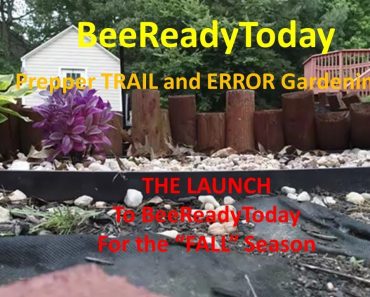Most of the skills we consider “survival skills” have been around for centuries. After all, the need to survive isn’t something new. The early settlers who came to the “New World” had to survive in a total wilderness, with little to no hope for resupply. Many of the earlier pioneers, heading west, didn’t have it any better. What supply did exist was along the rail lines, which could be several days away from where they settled.
Yet there have always been people who traveled far beyond whatever civilization existed at the time, living off the land. The Mountain Men were amongst them. Such people were often referred to as “woodsmen” because of time they spent in the woods and the common skills they shared.
One common woodsmen skill that we don’t seem to have much use for in the prepping and survival community is that of tracking. The old woodmen and before them the Native Americans were known for their ability to track anyone or anything. While that may not seem obvious as a survival skill at first, there are two distinct ways that it can be:
- Finding someone who is lost in the woods, like a child who wandered off.
- Keeping others from finding you, when you’re bugging out.
It’s clear how knowing tracking skills can help find someone who is lost; but maybe not so clear how those skills can help you while bugging out. But if you’re bugging out and someone is trying to find you, perhaps with nefarious intent, then knowing what means they’ll have to use to track you will help you to avoid giving them the information that they’ll need.
It All Starts in the Mind
Tracking isn’t just about signs that you can see with your eyes, much of it is about understanding the thinking of the person being tracked. If you can understand where the person you’re trying to track is going; what’s their goal, then you know where to look for them, as well as where to look for sign that they’ve passed that way. For example, someone lost in the mountains may head downhill, hoping to find signs of civilization. In arid country, there’s a good chance they’ll be heading for water.
Of course, there’s a larger picture than just the local picture of downhill or finding water too. In the case of someone bugging out, they would have to be heading for somewhere where they can set up and survive. So, where are the best places for that?
A good tracker will try to learn about the person they’re tracking, so as to be able to think as they think and make better guesses about what they will do. This means studying whatever sign they leave behind, including what sorts of camps they establish along the way, how they travel, and how they deal with obstacles encountered along the way. We are all creatures of habit and will often do things the same way, without even realizing it.
Look for Sign
Trackers will always look for whatever sign they can find. This usually means tracks on the ground… at least, once you get outside of towns and roads. Most of us leave sign as we travel through the woods, tracks and other sign as well.
It is generally easier to track someone who is not traveling on an established trail, as the ground of the trail will be hardened by many feet passing over it. Ground off the beaten trail will be softer, allowing shoes and boots to make imprints in the ground. Footprints can also be made in the foliage, as it will often be crushed down underfoot. Broken twigs on the ground are a sure sign of someone walking there, as animals will avoid stepping on those twigs. Long grass gets trampled down by people walking through it, leaving a very distinct trail.
Higher off the ground, branchlets can end up broken by people pushing through. Clothing can become snagged on foliage, leaving behind threads. These are easily seen, unless the person being tracked is wearing clothing that blends in with the forest.
But there’s more to it than just being able to see that there are tracks on the ground or that there are twigs that are broken. It is important to get to know the footprints that are there. Each of us leaves distinct footprints, partially because of the shoes that we wear and partially because of our own physical characteristics: our height, weight and stride. With time and practice, it can become easy to identify one person’s tracks from another, even if they are wearing the same sort of footwear.
In the Old West, people were able to identify which horse had passed by its tracks. Like humans, horses’ tracks will differ in how deep an impression they leave, the condition of the shoes, the size of the hoof and the length of the stride. The number of horses in a group can be identified, as well as what specific horses are in that group, to those who know what they’re looking for.
Finding a Lost Trail
It is possible, either accidentally or intentionally, to avoid leaving a trail. You and I don’t leave a trail, when we’re walking down the street, unless our shoes are muddy. Likewise, there are places in the woods where one may walk, without leaving a trail. Rocks are generally the best surface for this, but sand can work as well, especially if the sand has a bumpy surface, such as from many people or animals having crossed it before. But one of the best surfaces for leaving no tracks is the water. Walk down a stream or in the shallow water along the edge of a lake and whatever tracks you do leave will be hidden under the water, where the movement of the water will make them disappear.
If you suspect you are being followed, you want to utilize as many of these terrain features as possible, to hide your tracks. Don’t just assume it’s working though, turn around to look back and make sure that there’s nothing visible for anyone to find. Make a circle and go back over your own trail, looking for tracks.
Weather can work to obscure a trail as well. Snow will cover it up, but rain can be almost as bad, softening the ground and washing away footprints. For the viewpoint of one following a trail, rain is definitely your enemy; but from the viewpoint of one who is on the run, it is your friend.
What if you’re the one trying to follow that trail though?
A trail can seem to disappear, either because someone doesn’t want to be found or because they just happen to walk somewhere where they aren’t leaving a trail. But that doesn’t mean it’s gone. Regardless of why the trail has disappeared, it will reappear at some point, further down the line. The trick is to find that point.
The standard way of finding a lost trail is to make a series of ever-widening circles, “casting about” as it is called, looking for where the trail reappears again. Eventually the ground will change, and whatever terrain feature was hiding the trail will end. When that happens, the trail will once again become visible. The trick is to expand the circles far enough so as to encounter that point.
If You’re Being Followed
If you’re bugging out on foot, and fear that you may be followed, there are a number of things that you can do, to make it harder to track you. I’ve already talked about using terrain features that will hide your trail, but there are other things that you can do as well, which will make it harder to track you.
One of these is to take the difficult way. If we assume whoever is following you has criminal intent, then we can also assume that they probably aren’t the kind to do more work than they need to. If you go up a draw that is filled with felled trees, there’s a good chance they’ll either give up or try to find a way around. Even if you don’t lose them, you could gain some time.
Never travel in a straight line towards your destination. Always use a deceptive route, going there by a roundabout way. Make frequent, but irregular course changes, helping to hide which way it is that you are going. Whenever possible, make those course changes where you are on ground that won’t leave tracks, so that you have a chance of losing those following you. They might find your trail again; but they will have lost time looking for it.
Finally, be sure to do the unexpected, whenever you can. If you enter a stream to hide your tracks, then don’t come out the other side. Rather, walk along the stream for a few hundred yards, then come out on rock, on the same side of the stream. If you need to cross the stream, then find a place to do so, where it doesn’t look like a possibility. Make sudden turns to the right or left, once again, where there won’t be any tracks. All in all, do whatever you can think of, which would make it harder for you to track yourself, if you were the one doing the tracking.




























